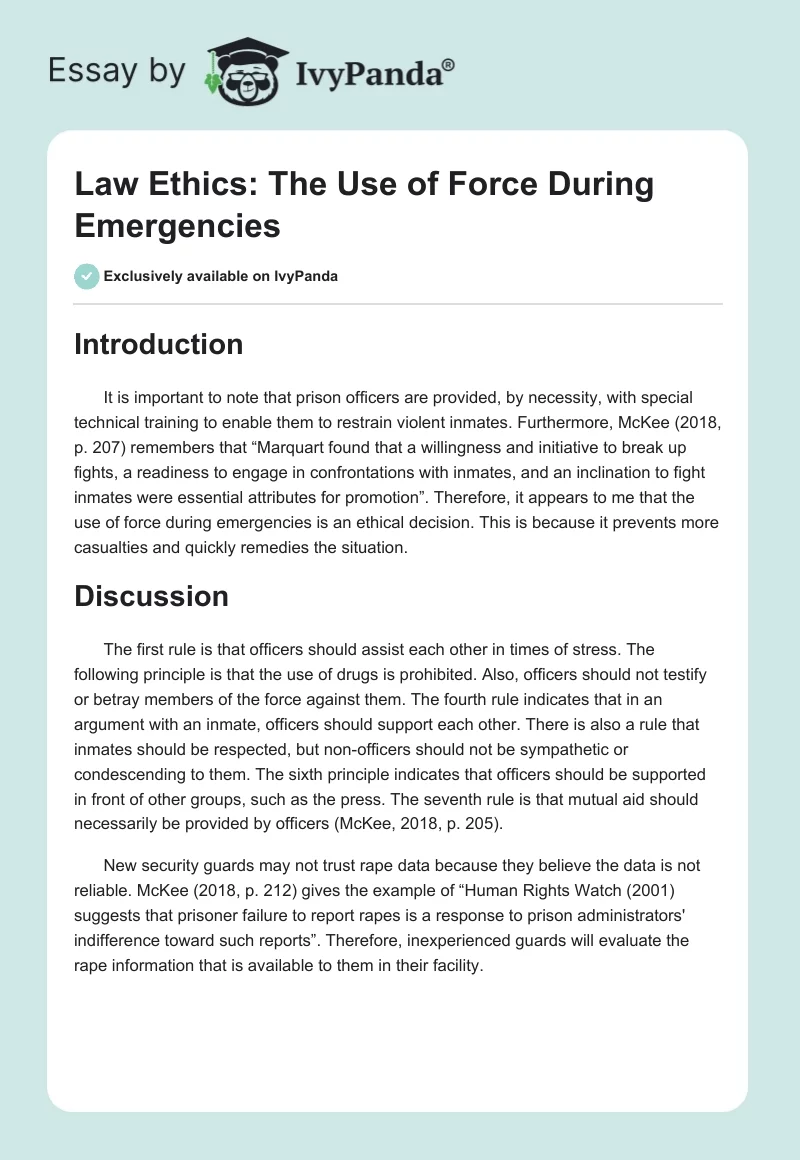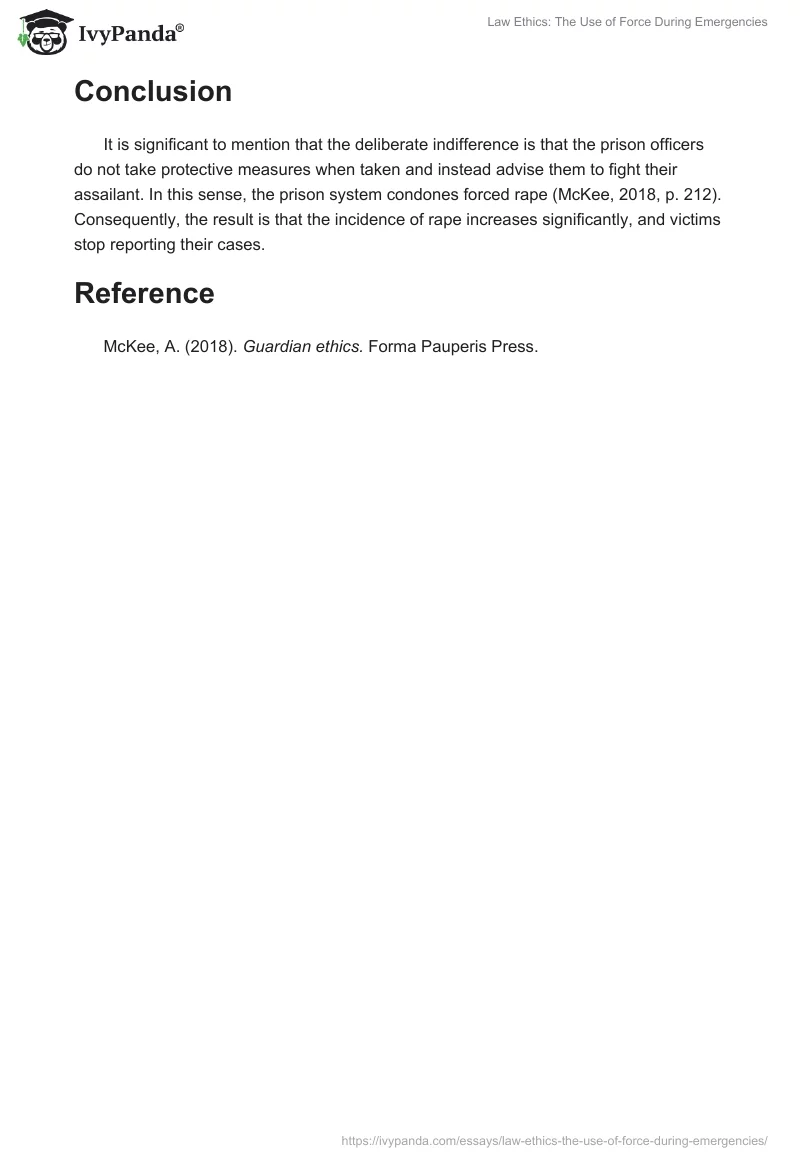Introduction
It is important to note that prison officers are provided, by necessity, with special technical training to enable them to restrain violent inmates. Furthermore, McKee (2018, p. 207) remembers that “Marquart found that a willingness and initiative to break up fights, a readiness to engage in confrontations with inmates, and an inclination to fight inmates were essential attributes for promotion”. Therefore, it appears to me that the use of force during emergencies is an ethical decision. This is because it prevents more casualties and quickly remedies the situation.
Discussion
The first rule is that officers should assist each other in times of stress. The following principle is that the use of drugs is prohibited. Also, officers should not testify or betray members of the force against them. The fourth rule indicates that in an argument with an inmate, officers should support each other. There is also a rule that inmates should be respected, but non-officers should not be sympathetic or condescending to them. The sixth principle indicates that officers should be supported in front of other groups, such as the press. The seventh rule is that mutual aid should necessarily be provided by officers (McKee, 2018, p. 205).
New security guards may not trust rape data because they believe the data is not reliable. McKee (2018, p. 212) gives the example of “Human Rights Watch (2001) suggests that prisoner failure to report rapes is a response to prison administrators’ indifference toward such reports”. Therefore, inexperienced guards will evaluate the rape information that is available to them in their facility.
Conclusion
It is significant to mention that the deliberate indifference is that the prison officers do not take protective measures when taken and instead advise them to fight their assailant. In this sense, the prison system condones forced rape (McKee, 2018, p. 212). Consequently, the result is that the incidence of rape increases significantly, and victims stop reporting their cases.
Reference
McKee, A. (2018). Guardian ethics. Forma Pauperis Press.


